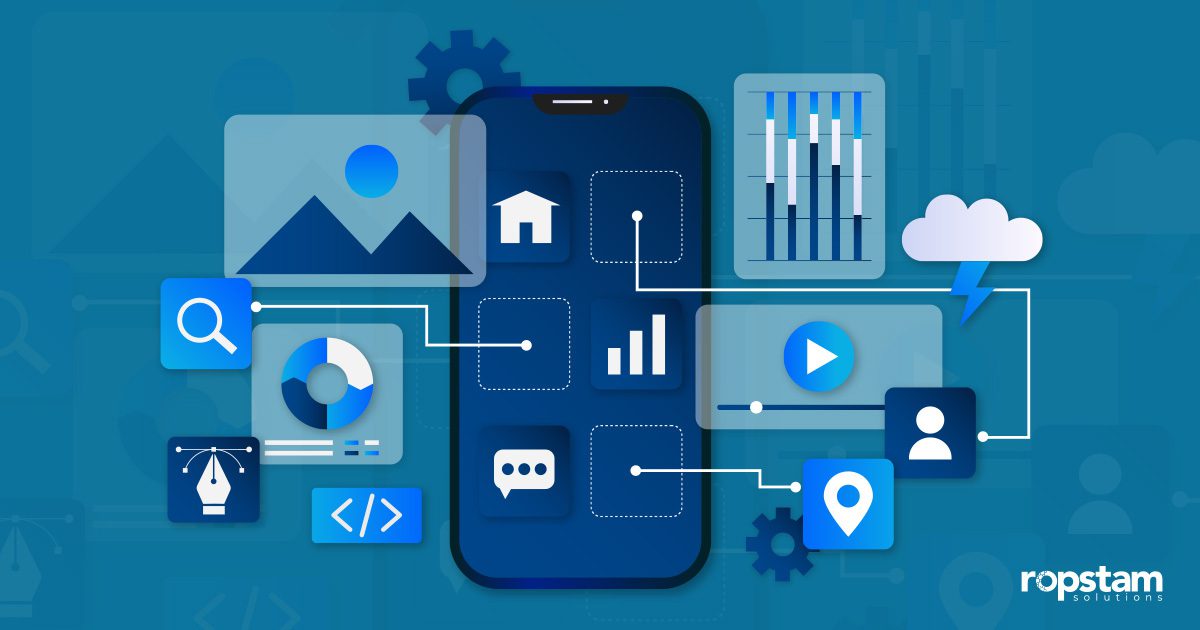Delivering high-quality software quickly is essential in today’s fast-paced software development world. DevOps is crucial for speeding up the process by integrating development and operations. However, a key challenge is maintaining quality while accelerating release cycles. This is where a strong DevOps testing strategy becomes essential.
A comprehensive testing strategy in the DevOps pipeline integrates automated testing at every stage of development, enabling faster bug detection, reducing manual errors, and improving overall software quality. This blog will guide you through building an effective DevOps testing strategy and outline the key steps to help your team implement robust testing and maintain high-quality releases.
Role of DevOps in Software Development
DevOps, which stands for Development and Operations, enhances collaboration between the development and operations teams to automate and streamline the software development lifecycle (SDLC). This approach helps deliver software faster by focusing on continuous delivery, integration, and rapid deployment.
DevOps plays a crucial role in software development by reducing the gap between development and operational workflows. By fostering a culture of continuous integration and deployment (CI/CD) and incorporating GitOps practices. DevOps ensures software is built, tested, and deployed agilely. GitOps uses Git as the single source of truth for declarative infrastructure and applications, promoting version control, consistency, and enhanced collaboration. This combination leads to faster releases, improved collaboration, and overall productivity.
In the context of testing, DevOps brings testing closer to the development process, ensuring that it happens continuously rather than being delayed until the end of the development cycle. Smoothly incorporating testing into the workflow is essential for achieving success in DevOps and ensuring high software quality.
10 Key Steps for Developing DevOps Testing Strategy
Creating a successful DevOps testing strategy requires a straightforward, structured approach. Below are 10 key steps to building an effective plan to assure faster, more reliable software delivery.
1. Understand Your Goal
Defining your goal is the first and most crucial step in developing a DevOps testing strategy. Every organization has different needs; your testing strategy should align with your primary objectives. Do you want to reduce the time to market, improve collaboration between teams, or minimize defects in production? Defining your goal upfront assures that your strategy has a clear direction.
Focus on automation and continuous integration to reduce release times. If improving product quality is key, emphasize thorough automated testing and shift-left practices.
A clear, measurable goal will guide your testing decisions and shape the rest of your DevOps strategy.
2. Involve Stakeholders
DevOps is all about collaboration; your testing strategy should be different. A successful DevOps testing strategy requires input and involvement from all stakeholders, not just the testing team. This includes developers, operations teams, security experts, product owners, and business analysts. Each group brings its insights and priorities to the table.
Involving the operations team guarantees tests prioritize system reliability and deployment. Engaging security experts early integrates security throughout the lifecycle. Aligning the team around a common strategy fosters a unified approach to DevOps testing for better outcomes.
3. Access Your Current State
Before implementing new testing strategies, it’s essential to understand your current testing processes, tools, and infrastructure. Assess the tools you already use, the workflows in place, and any bottlenecks or inefficiencies you may encounter.
Conducting this audit gives you valuable insights into what is working well and what needs improvement. For example, you might realize that your manual testing processes are slowing down the pipeline or that there are gaps in your test coverage. Understanding your baseline allows you to develop a strategy that builds on your current strengths and addresses your weaknesses.
4. Select Appropriate Tools
DevOps testing demands tools that support automation, scalability, and collaboration. However, the wide variety of testing tools can make it challenging to select the right ones. The key is to choose tools that integrate well with your existing CI/CD pipeline and align with your testing goals.
For instance, Selenium or Cypress might be great options for automating regression testing. Jenkins, GitLab CI, or CircleCI can automate the deployment process for continuous integration and deployment. It’s essential to guarantee that the tools you select integrate seamlessly, enabling efficient collaboration across teams.
Additionally, consider tools that support testing in various environments, such as virtual machines, containers (e.g., Docker), and cloud environments. This flexibility guarantees that tests can be run in environments that closely mimic production.
5. Define Test Objects
In DevOps, test objects refer to your software or infrastructure elements that require testing. These could range from individual code modules to entire system deployments. Clearly defining what needs to be tested guarantees that no aspect of the software is overlooked.
Test objects in a microservices architecture may include service components, APIs, and inter-service communication. In web applications, they consist of UI components, database interactions, and third-party integrations. Early identification and documentation of these objects guarantee comprehensive coverage and prevent redundancy.
6. Implement Shift-Left Testing
Shift-left testing emphasizes early and frequent testing during the development lifecycle, allowing for quicker and easier bug fixes. In contrast to traditional methods where testing occurs after development, DevOps integrates testing from the start. This approach enables developers to run unit tests, static code analysis, and integration tests while coding, catching defects early before they spread. Automated tests should be triggered with new code check-ins to provide rapid feedback and address issues promptly.
7. Automate Where Possible
One of the most significant benefits of DevOps is the ability to automate repetitive tasks, including testing. Automation reduces the time needed to run tests, minimizes human error, and guarantees consistency.
Automating your testing suite should be a priority, especially for tests that need to be run frequently, such as unit tests, regression tests, and smoke tests. Tools like Jenkins, CircleCI, and Travis CI can integrate automated testing into the CI/CD pipeline, ensuring that tests run continuously whenever code changes are made.
Automation allows for faster feedback and enables the team to focus on higher-value tasks, like Exploratory or performance testing, rather than normally executing tests.
8. Establish Clear Test Criteria
Clear test criteria are essential for understanding when a test has passed or failed. Well-defined criteria help avoid confusion and guarantee that the testing process is consistent across teams. For instance, you may define specific performance benchmarks, security thresholds, or error tolerance levels that must be met for a test to succeed.
Clear test criteria also help stakeholders better understand the product’s state and make more effective decisions. With clearly documented criteria, teams can more easily track progress and determine whether the product is ready for production deployment.
9. Security Should Be A Priority
Security testing must be prioritized in a DevOps environment. It is essential to integrate security throughout the entire development process, ensuring that vulnerability testing occurs at each phase of the software development lifecycle (SDLC). DevSecOps is a practice that integrates security into DevOps, ensuring that security issues are identified early before they become critical vulnerabilities.
Automated security testing tools, such as OWASP ZAP, SonarQube, Fortify, QA Wolf, Vega, SQLMap, ManageEngine Vulnerability Manager Plus, and Burp Suite, can help identify potential security risks in code, third-party libraries, and configurations. Security should be treated as a continuous process, not just a final step before deployment.
10. Documentation and Testing
While DevOps is focused on speed and automation, documentation is still essential. Proper documentation of your testing strategy, test cases, results, and troubleshooting steps guarantees all team members are on the same page. It also serves as a valuable reference for improving future tests.
Documenting test results allows teams to analyze trends, track regressions, and refine testing practices. Comprehensive documentation also provides clarity and transparency, ensuring everyone involved in the DevOps process understands the testing objectives and criteria.
Final Thoughts
Building a DevOps testing strategy is crucial for any organization that adopts DevOps practices. Following the 10 key steps outlined in this blog, you can create a robust testing strategy supporting continuous integration, delivery, and deployment. From understanding your goals to automating your tests and embedding security throughout the process, each step is crucial in ensuring that your DevOps pipeline delivers high-quality software quickly.
DevOps testing is not a one-time task; it’s an ongoing process of refinement and improvement. By continuously evaluating and adjusting your testing strategy, you guarantee that your DevOps pipeline remains efficient, secure, and capable of delivering top-quality products.













